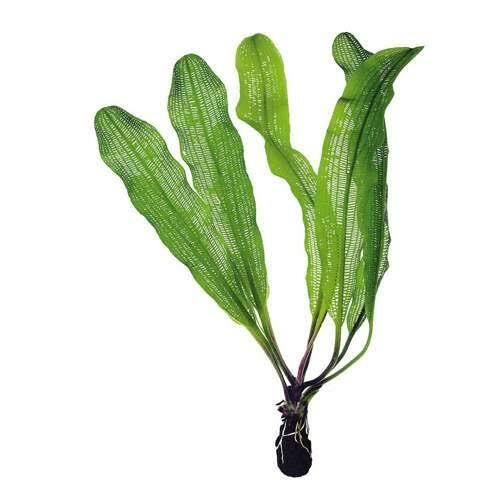Aponogeton henkelianus BULB AQUADIP
£4.99
Couldn't load pickup availability
Shipping Information
Shipping Information
Economy Shipping (5-6 Days) £3.49
Standard Shipping (2-3 Days) £4.99
Courier Shipping (1-2 Days) £5.99
Free Shipping from £49!
(for mainland UK only!)
Pre-orders
Pre-orders
Pre-orders
We offer the option of pre-orders on some products. These are specifically ordered for you. Pre-orders usually despatch within 2-9 business days. We reserve the right to hold the order until all items are in stock, but generally strive to ship what is available as soon as possible!
Pre-orders are clearly marked on the product page!
Aponogeton henkelianus - BULB
This fascinating variant of the Madagascar laceplant is also known as Aponogeton madagascariensis var. henkelianus. It lives up to its name "laceplant" or "laceleaf": the broad leaves have a delicate grid structure, the leaf tissue is reduced to the thin nerves. The larger perforations are divided by smaller, irregularly arranged connecting nerves. As a solitary plant or small, loose group in the midground or background, Aponogeton madagascariensis "henkelianus" draws all eyes.
The forms of Aponogeton madagascariensis originate from cool, fast flowing, permanent rivers in Madagaskar. They prefer cooler water below 25 °C, good water movement, CO2 supply and nutrient-rich bottom. Medium lighting is sufficient.
Bulbs: All our bulb plants can come with leaves, but we do not guarantee this. You are only buying the bulb itself. If it comes with leaves attached, these can sometimes get damaged in transit, just cut them off or give them time to recover, this is not considered a defect.
"Planting bulb plants": No planting needed, just drop them in place, the bulb will throw down roots by itself and anchor into the substrate. You can give them a little press down, but do not bury them.

-
WELL TRUSTEDOver 100k customers
-
SUPER FASTCourier Option
-
BEST PRICESUnbeatable value

